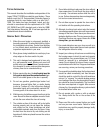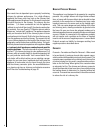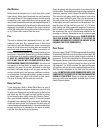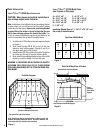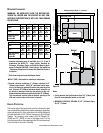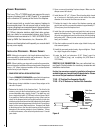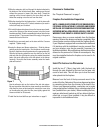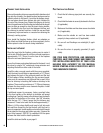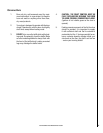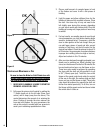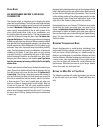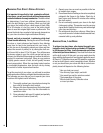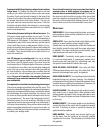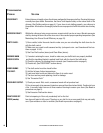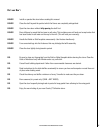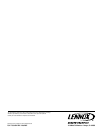Special offers from our partners!

Find Replacement BBQ Parts for 20,308 Models. Repair your BBQ today.

15
NOTE: DIAGRAMS & ILLUSTRATIONS ARE NOT TO SCALE.
Experiment with different loading configurations to achieve
longer burns. Try loading the wood from side to side and
nesting it in the ashes to prevent airflow under and around
the wood. Fresh wood should be loaded to the back of the
firebox or to the sides. Hot coals or half burned wood should
be brought towards the front of the firebox. The way you
load your wood can seriously affect burn times. If the new
load does not ignite within a few minutes, try crisscrossing
the load to allow more airflow around the fire or try a slightly
hotter stove temperature.
Determining the lowest setting for efficient low burns. This
will require some experimentation on your part. Try clos-
ing the air control all the way with the stove temperature at
325
degrees to 350 degrees. If the flames are completely
extinguished, open the air control half way and then slowly
close it until there is only a small amount of flame. It is im-
portant to check the stove about 20 minutes after setting the
draft control as it takes this long for the stove temperature
to stabilize. There should still be some small flames on or
above the wood load.
Use 325 degrees as a starting point. You can try starting
temperatures 25 degrees higher or lower to achieve desired
burn times, start 25 degrees lower if the stove burns the
wood too quickly or 25 degrees higher if there are no flames
in the firebox for more than a few minutes after loading the
wood. You may or may not need to burn the stove with the
air control open for a few minutes prior to setting the draft
for a low burn, this will depend on the factors mentioned
above. Be sure not to smolder a fire overnight. Check your
chimney for large amounts of smoke as this indicates very
poor combustion.
It is important to realize that stove technology has changed.
Stoves have changed a great deal in the last few years. This
has led to substantial changes in the methods of operation in
new stoves as compared to older stoves. In old stoves without
full brick linings and ceramic insulation, the rule was “get
the stove as hot as possible before setting the draft on low
for overnight burns.” On newer, high technology Country™
Collection stoves, this is not necessary. Although it is still
important to have the stove hot enough to burn efficiently, it
will require less preheating. Once you have determined your
optimum operating temperatures for various burn rates, we
believe you will find your stove an extremely convenient way
to achieve your heating needs.
Do not reload the stove for long burns when the stainless
secondary tubes or baffle supports are glowing red, or
when the stove is uncomfortably hot to load. This indicates
the stove is too hot to load for a long burn. Also, do not load
wood for a long burn on a deep bed of hot coals. Try stirring
the coals a few minutes before loading the stove for a low
burn to allow some of the unburned coals time to burn.
maintenanCe
DOOR HINGES: If door hinges need lubricating, use an anti-
seize compound (never use oil) available from your Lennox
Hearth Products dealer.
DOOR LATCH: If your door latch fails to latch tightly and the
gasket is in good condition, place a length of pipe
(cheater bar) over the inside portion of the door handle and
bend slightly toward the door until the proper adjustment
is obtained. If the door handle does not close easily, apply
high temperature anti-seize to the striker.
DOOR GASKET: Periodically check gasket to make sure
it is not over-compressed. If compressed, replace with a
special woven door rope (Don’t try substituting rope, only
use special Lennox Hearth Products door rope).
GOLD OR NICKEL PLATED DOOR: Clean only with WIN-
DEX brand glass cleaner and a very soft cotton cloth. Other
products may damage brass, paint, and gaskets.
INSULATING BLANKETS: Your insulating blanket should be
inspected during every chimney cleaning. If the blanket is
compressed or heavily stained, it should be replaced. Heavy
creosote stains or matting is an indication of improper use
and your burning habits should be reviewed.
GLASS CLEANING: Only clean glass with products specifi-
cally made to use on wood stoves. Other products could
damage gaskets and paint. Never scrape glass with a razor
blade. This can pit the glass and make it impossible to clean
in the future.
WINDOW GASKET: The window gasket can be checked by
running the flame of the match near the gasket and around
the door. If the flame is drawn in around the window, the
gasket should be replaced.
DOOR HANDLE: Door handle may become tight as you
use the stove. Free the handle up by using dry graphite
supplied with the stove. The directions are included with
the graphite.



